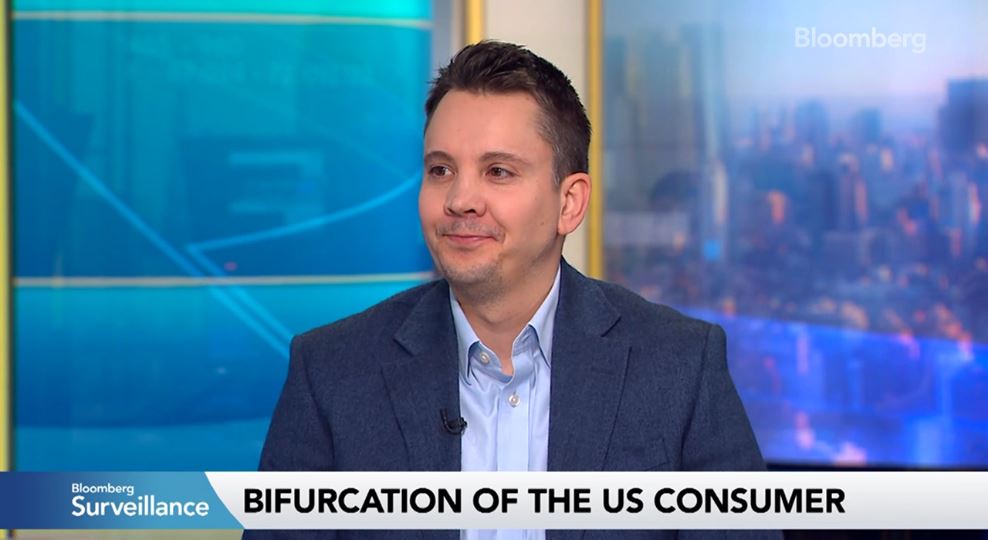Discipline Key to US Growth Strategy
The US investment banking market is the largest and most lucrative in the world, and the most tightly locked down in the hands of domestic firms. But vaulting up the league tables, of late, has been Mizuho — hoping to break down Japanese bank stereotypes in the process.
“It’s a retirement trade. I can’t see why anyone would work for a Japanese bank when they still thought their career was going places,” said a head of DCM at a European house. That view still holds sway in a lot of quarters, whether referring to the brokers, Nomura and Daiwa, or the megabanks and their securities arm.
Historically, the perception has been that the big Japanese banks offer out a lot of balance sheet for not too much return, and in the more staid, conservative areas of the capital markets. International lending rates were punchy compared to domestic Japan, but firms struggled to convert balance sheet into fee business, or to make inroads outside specialist subjects like distribution into Japan, warrants, or structured notes.
But the upheaval in the investment banking industry is overturning a lot of old verities. Banks like Barclays, Credit Suisse and Deutsche Bank are reviewing their operations, scaling back in some areas, and retreating from their aspirations to be global full service houses, while others, like Royal Bank of Scotland, have already drawn their horns in and reinvented themselves as largely domestic banks.
That risks leaving the US market served mainly, and very capably, by Bank of America, Citi, Goldman Sachs, JP Morgan and Morgan Stanley. These firms aren’t going anywhere, but the restructuring and refocusing of some international banks means there’s everything to play for in the tier below.
Buying Growth
That’s the trade Mizuho wants to do, sloughing off the idea that it’s just a lender with a large balance sheet, and building a meaningful US investment banking platform that can compete with the best of the foreign firms.
“The sheer number of relationships that the American banks have is a huge barrier to entry,” said John Humphreys, head of North American investment banking at Mizuho. “None of the foreign banks will ever have that same level of penetration across businesses, there’s no way to economically emulate that model. But it’s healthy for clients to have alternatives outside those top five firms.”
It’s a long road, and the dream is a long way off — the bank isn’t inside Dealogic’s top 100 firms for US M&A — but it is showing commitment to getting there, hiring, for example Rich Gallivan as head of North American TMT investment banking. Gallivan joins from Barclays, with a background in west coast technology coverage, and has a mandate to build a tech banking business with ECM, M&A, event financing and sponsors elements.
Tech investment banking is a long way from the balance sheet led business one might expect, but the firm has already come a long way.
The strategy of building up in the US was already in place, but the big transformation came when Mizuho bought a big chunk of RBS’s North American assets in 2015 — a $40bn book of loan commitments, with around 130 bankers and a DCM leadership team of Jennifer Powers, Victor Forte and Richard Smith.
“The [RBS] acquisition transformed our position with many clients, taking us from third or fourth tier to first tier, and brought us a swathe of new clients,” says John Humphreys, head of investment banking, advisory and solutions at Mizuho North America. “It left us with a financing product suite all the way from commercial paper to structured products, with admin and advisory around the whole range.”
The bank does not break this out in its financial statements (and lots of the commitments are undrawn) but it saw year-on-year average overseas loans grow $24.28bn between the second half of 2014 and the second half of 2015 — on a balance sheet of $173.4bn.
Naturally, the place to start from a large acquisition of mainly loans was building up in debt capital markets. The bank hasn’t vaulted up the overall US DCM league tables — Dealogic shows Mizuho placed 13th in the first quarter 2015, and 15th by the second quarter of 2016 — but market share has grown steadily, breaking 1%, and leaving it ahead of, for example, Sociéte Générale, UBS, and Jefferies in United States DCM.
In investment grade corporates however, the bank’s preferred segment, the progress is much clearer — from 15th at the end of 2014 to 10th in the first quarter. The bank started 2014 with a market share of 0.75%, and is now up to 2.67%. That leaves the trio of banks in turmoil — Barclays, Credit Suisse and Deutsche — as the only other foreign banks apart from RBC ahead of it in the league table.
“Our market share in IG capital markets has doubled, and if we look across products, there’s a level of scale that we’ve now achieved which means that we’re really in the flow,” says Humphreys. “We’re feeling good about that, and the US is a point of strength for the group, something which benefits all our global relationships.”
Buying the business wasn’t necessarily straightforward — there’s a reason banks haven’t consolidated much. Regulators don’t always want banks to be bigger, and any asset sales come with challenges of different systems and extensive due diligence.
RBS, however, seemed to be a good fit. Humphreys said: “We’ve known the RBS senior leadership in the US for a long time, and they’d cultivated a successful franchise by going through a similar process."
Bankers Next
Following the RBS acquisition, the bank set about hiring staff. Against a backdrop of staff cuts across the Street, some banks by double digit percentages, Mizuho appears to have been on a hiring spree, but look closer and the recruitment is more careful than that.
Many of the new hires have serious bulge bracket experience, but have spent time out of the market, or working with smaller firms.
Richard Thompson, for example, joined in August 2015 as senior vice-president and co-head of debt private placements. His last role was at JP Morgan, also as global head of debt private placements, but he left the firm in August 2014.
Derek Dillon, the head of equity capital markets, appointed in December 2014, spent most of his career at Bank of America, ending up as co-head of ECM. But he left Banc of America Securities in 2009, and joined Mizuho from Plural Investments.
Dillon reports to fellow newbie Matt DeSalvo, who joined in September 2014. Again, his CV is full of bulge bracket experience — head of equity sales at Morgan Stanley, head of equities sales and trading at Credit Suisse — but he joined Mizuho out of CRT Capital.
That’s not too different to the firm’s approach in Europe where the primary debt markets business is run by Mark Wheatcroft and syndicate by Guy Reid, both bankers finding shelter after UBS slashed its SSA business in October 2012, literally leaving staff out on the street unable to access the building.
The sheer availability of talent, with many of the larger firms shrinking their businesses (or at least, trying to do more work with cheap juniors, and hire fewer managing directors) helps solve one of the major problems in building an investment banking franchise — how long can you sink money into it before you make a return?
“When you want to ramp up an investment banking business, every part depends on every other part,” said Humphreys. “Do you build the products first, then bring in the bankers, then hope they bring in the clients? That means you’re running a high cost base. But if you try to grow your client list before there’s the right product mix, product penetration is too low, and you can’t support the bankers you need to cover them.”
Rebranding the Japanese
But hiring the right bankers also means dislodging the unpleasant stereotypes that sometimes surround the Japanese firms. Previous attempts at expansion have been costly, and left senior bankers high and dry, with little business coming in the door and less latitude to build a franchise than they had hoped. The more mercenary would take the guarantee and then walk, back to a firm which looked better on the CV.
However, as the bank’s rise up the US investment grade league table shows, it is now a force to be reckoned with.
“I’ve been absolutely pleasantly surprised by the receptiveness to the name when we’re hiring,” says Humphreys. “I think the old ideas about Japanese institutions are slowly being dislodged, against a backdrop of very low morale at a lot of banks right now.”
Tangible progress helps, as does a clear plan, and the troubles of rivals.
“The availability of talent to join Mizuho is materially different to how it was when I joined. When I talk to senior people at the bulge bracket firms, they’re intrigued and interested and can see the potential in what we’re doing.”
Even if the bank never gets further than US IG bonds, this is still a solid franchise foundation. To achieve its 10th place in the first quarter, Mizuho was bookrunner on $41bn of bonds, and the market has higher fees than EMEA or Asia.
But that’s not the endgame. Mizuho, in the US at least, wants to go well beyond the simple balance sheet for bonds equation, and start to win fee-paying, advisory or business that adds high value on its own merits.
No bank on earth would reject the chance of extra fee business. The question is how to go about winning it.
The Advisory Prize
For a start, Mizuho is realistic. Even if it has a set of prestigious new hires and some league table progress to point to, it knows that it has little chance of winning sole adviser mandates for corporate America’s marquee deals. The firm might be on a mission to hire more tech bankers, but it’ll be a while before Mizuho lands a sole role on a Microsoft trade.
“We think the sweet spot near term for our M&A and advisory business are the middle market deals between $200m and $2bn,” said Humphreys. “We are not focused on elephant hunting. The big deals can be very lucrative, and do drive top line volumes, but building a business around them is a high risk strategy.”
It’s building up via its equity capital markets — hence the hire of Dillon — equity research, and sponsors businesses.
The latter two can, in the right circumstances, be differentiating. Sponsors are the most prolific users of investment banking services, and clients with a chunky balance sheet can make a difference. Humphreys points out that few firms can write large tickets quickly. Most of the loan book Mizuho bought from RBS was undrawn, but that doesn’t mean the bank can’t show up in drawn acquisition financing.
As with many banks outside the top tier of M&A firms, Mizuho plans to go on plugging away. M&A ideas that dominate the headlines — Pfzier's failed $160bn bid for Allergan, for example — give the banks in prime position to execute a great payday. Fees on the deal could have been $236m, for example, and even after it fell apart, the banks still stand to collect a smaller cut.
But the ideas like trying to buy one's biggest competitor aren’t necessarily distinguishing.
“For our large cap clients, while we’re showing bolt-ons and disposal ideas, of course we will show them the transformational ideas as well,” says Humphreys.
He added: “We realise that we’re not likely to win those as sole advisory mandates at this stage in our growth, although there may be cases where we are well placed. Regardless, with our financing product strength we can add real value funding the large cap deals while we carry on executing on core M&A trades, demonstrating our worth, and deepening the relationship.”
What’s Different?
Given the bank’s limited progress in US M&A so far, it’s fair to ask: how is this different from a dozen different build-outs in the past. Lending money can win you bond mandates; hire enough coverage bankers and, eventually, there’ll be dealflow in ECM and M&A.
But without the storied reputations of the top Wall Street firms, this will never exactly be the cream of the crop. It will take a little while before business comes in the door just because of the name Mizuho.
The crucial difference in building now, however, might be where the bank starts from, and where its competitors are. Aiming to be top 10, alongside the other foreign banks, rather than tilting at windmills trying to break the deadlock of the US firms, is a smart move, which should keep a lid on costs and complexity as the bank continues to grow.
“There were games played in the past, firms which would throw out loads of balance sheet looking for market share, which led them into inappropriate risk management situations,” says Humphreys. “We’re growing in a more focused, disciplined way than that.”
He added: “Discipline is key in management of a business like ours. It’s about being very clear what business we’re chasing and why. We need to align people around figuring out what the prize is.”
The regulatory environment also helps. While it makes nearly all investment banking activities less profitable, it hurts incumbent firms more than it hurts Mizuho.
“There’s a higher level of regulatory cost today, and capital costs are higher,” says Humphreys. “But fortunately we have a business that’s not as cost intensive as some of our competitors. For example, we don’t have a bloated legacy derivatives book, an overbuilt investment banking platform or a massive trading business, and we’re well capitalised.”
Indeed, the bank’s securities arm in London is heavily focused on building out its electronic and cleared derivatives capabilities — two approaches that chime with the new regulatory environment.
In the US, the trading arm also has circumscribed goals.
“The intention is to leverage the trading business to help primary,” says Humphreys. "We’re not running masses of value-at-risk, we’re not looking to be a hedge fund, but we do need to make markets. You need to trade in multiple asset classes to have a market view, perhaps not making markets in every bond out there, but getting a sense of client flow to be able to give them the best advice.”
Too early to judge
If the bank gets its expansion strategy right, the prize is huge, both in terms of the absolute wallet on offer, and the potential to use it as a foundation for global investment banking.
“The US is 50% of the world fee pool, with a very high level of economic connectivity to the rest of the world, and Europe is highly competitive,” says Humphreys. “We’re not going to do the same extent of advisory build out there that we will in the US, but we will definitely continue to add to our coverage and capabilities to remain in the flow and relevant to clients across the region.”
The progress in bonds is impressive to see, as is the stream of new hires. But building a fully fledged corporate finance business takes a long time. However impressive the recruits, and however committed the firm, becoming a trusted adviser to the top tier of corporate America won’t be easy, and many banks have tried and failed. This time though, it really could be different.
Read the article on globalcapital.com
Article Reprinted with Permission of Global Capital. All Rights Reserved. Copying Prohibited Without the Permission of the Publisher.




